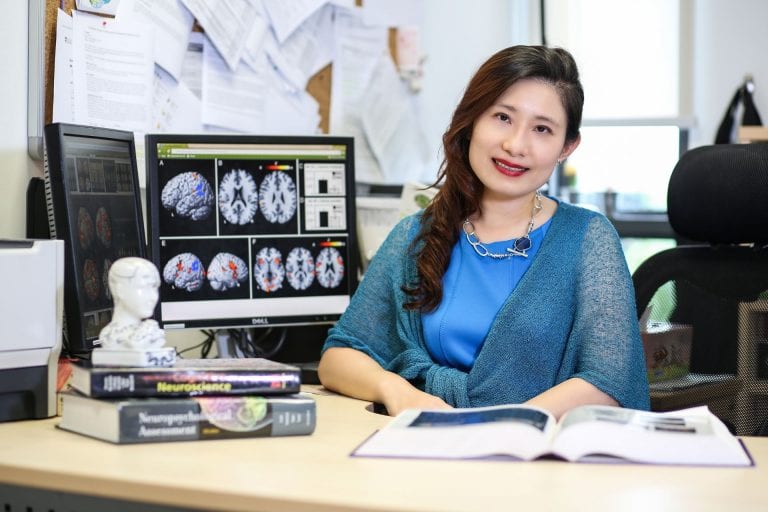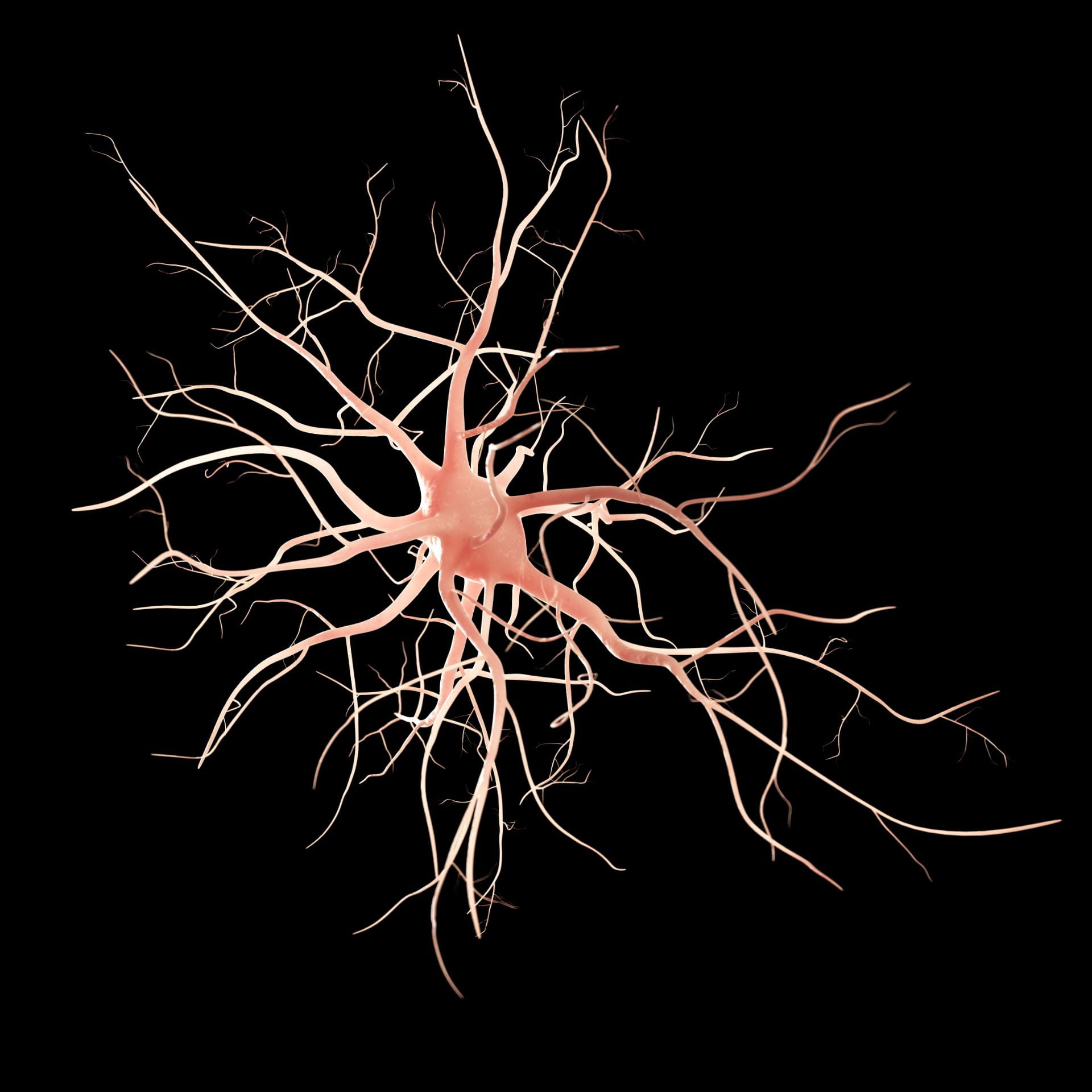A leading light in lifelong learning
At NTU's Centre for Research and Development in Learning (CRADLE@NTU), scientists are advancing evidence-based education to transform the learning landscape in Singapore and beyond.

Connecting the science of learning with the art of teaching.
Our prodigious ability to learn has enabled humans to achieve astounding feats; by accumulating knowledge and passing it down from generation to generation, we have built entire civilisations, reshaped our planet and even gone into space.
For millennia, this learning was largely informal and unstructured— instruction reserved for society’s elite. Then came the Industrial Revolution, and with it mass education, which, in the spirit of the times, took on a factory-like mode of operation.
But much has changed in the two hundred years since then. Learners are now no longer seen as future factory workers or passive vessels to be filled with information, but active participants who must acquire critical thinking skills. Learning, likewise, has had to adapt.
Leading the charge is the Centre for Research and Development in Learning (CRADLE@NTU), a research centre established in late 2014 to raise the quality of education using research-based findings.
“We see ourselves as a platform, and invite all researchers interested in pedagogy and learning to join us,” says Prof Annabel Chen, Director of CRADLE. “Whether you are from cognitive neuroscience, education, psychology or computer science, we welcome you to come together and work with us to build new paradigms to answer the most urgent questions in the science of learning.”
 Prof Annabel Chen, Acting Director of CRADLE. Credit: NTU.
Prof Annabel Chen, Acting Director of CRADLE. Credit: NTU.
A peek into the bilingual brain
Noting that there are many well-established research disciplines studying how learning can be improved, Prof Chen says that the emerging field of learning science is focused on where the different
fields overlap. “What we are interested in is the nexus between different disciplines—transdisciplinary research that combines knowledge from education, psychology, neuroscience and technology.”
CRADLE has provided seed funding to support such interdisciplinary collaborations. One of these is with experts in the Science of Learning Institute at Johns Hopkins University in the US. NTU’s Nanyang Asst Prof Suzy Styles, a developmental psycholinguist, is working with Johns Hopkins’ Prof Barbara Landau to investigate language acquisition of infants in a multilingual environment.
In collaboration with Johns Hopkins’ cognitive neuroscientists like Prof Brenda Rapp and Prof John Desmond, Prof Chen and Dr Beth O’Brien from the Office of Education Research at NTU’s National Institute of Education (NIE) are studying reading networks in bilingual adults with the plan to investigate the neural mechanisms of reading difficulties in dyslexia.
In her own research, Prof Chen looks at the impact of dyslexia in the brain networks of bilingual learners. The findings could be a cornerstone in linking upstream brain imaging studies with downstream classroom interventions, helping to elucidate how bilingual reading networks are impacted by dyslexia and to identify more efficient intervention strategies.
“The unique thing about education in Singapore is that children are taught to be bilingual, and children with different mother tongue languages all learn together in the same classroom, ” Prof Chen explains.
“But certain languages are closer together than others. For example, Malay and English are very close phonologically, but Chinese is very distant to both. What happens in the brain when an English-Malay bilingual child has dyslexia, and is it different from what happens in an English-Chinese bilingual child? The better we understand dyslexia in children and the earlier we can detect it and intervene, the better the outcomes can be.”
In Singapore, the education system has the advantage of deep connections between the three main players: the Ministry of Education, NTU’s NIE and the schools themselves. At NIE—Singapore’s main teacher development institute—the faculty not only teach student teachers how to teach but also carry out extensive research into improving learning for their students.
“Taking part in research ensures that teachers are at the forefront of best practices. By carrying out research in the schools, there is a direct impact in the classrooms. At the same time, the information of what works on the ground with the schools and teachers is fed back to Singapore’s Education Ministry, which can inform policy,” Prof Chen says.
“This way, the Ministry, NIE and schools form a ‘golden triangle’ where everybody works together to improve learning in the classrooms of Singapore.”
A uniquely NTU education
Given the lasting impact that early childhood and primary and secondary, or K-12, education can have on the development of the brain, it is no surprise that much of the research in the science of learning
has focused on that critical phase. However, researchers at CRADLE are also forging ahead in the relatively less well-understood areas of university education and adult learning.
“You can think of CRADLE as a broker, bringing the different fields together,” says Assoc Prof Tan Seng Chee, Associate Dean in NIE's Office of Graduate Studies and Professional Learning. “Not only does CRADLE tie the different departments at NTU together, but we also form the link between K-12 education and tertiary education and even to adult education.”
“At NTU, we are very fortunate to have NIE,” adds Prof Chen. “Efforts across the University were further strengthened when the late Prof Lee Sing Kong, after stepping down as Director of NIE, helped to establish CRADLE as its Founding Director. The goal was to improve teaching at the university level.”
“The initial motivation was to ask the question of what an ‘NTU’ education is, and what would make graduates from NTU unique. Subsequently, we also wanted to know if the proposed changes were effective in helping students learn better,” she continues.
For example, researchers from CRADLE worked with a teaching team from the Asian School of the Environment to modify a course taught in a traditional format with lectures to a technology-enabled format using interactive questions and group work. After three years of monitoring how students responded to the changes, the researchers found that student approval ratings for the course improved from 55% to 92%.
“At CRADLE, we are not trying to prescribe the way lecturers teach, but work alongside them to improve instruction,” Assoc Prof Tan says. “This example illustrates how technology-enhanced or technology-enabled learning is not about a
one-off conversion but involves a lot of research along the way. We are trying to effect change not just in the form of delivery, but also in the belief in what effective learning is.”

Keeping seniors excited
Another notion that CRADLE researchers are trying to overturn is that the ageing brain can no longer learn. “Neuroscience shows us that is not true; we still have plasticity as we age and certain lifestyle
activities can act as a scaffold, helping the brain adapt,” Prof Chen says.
In particular, exercise is known to improve cognition by increasing the levels of dopamine in the brain. Cognitive training, which can be thought of as “exercise for the brain”, has likewise been shown in research studies to improve cognitive processes, she continues.
“Not many studies have looked at this, but it is possible to get the best of both worlds. We devised a very simple exercise-based programme with cognitive components to do just that. Called ExCITE, which stands for ‘exercise and cognition integration for enhanced healthy living’, the training programme aims to optimise cognitive functions during ageing,” Prof Chen says.
At the moment, the ExCITE programme has been piloted in young adults and a few older adults, showing promising improvements in cognitive performance, Prof Chen shares. The research team, led by NIE sports psychologist Asst Prof Masato Kawabata, is formalising the prototype, with follow-up brain imaging studies also planned.
This research on activities that can prevent cognitive decline also has implications for adult learning, adds Prof Chen. In 2016, CRADLE signed a Memorandum of Understanding with the Institute of Adult Learning, the research arm of a governmental initiative called SkillsFuture Singapore, to collaborate on research in improving teaching and learning in adults in Singapore.
Changing the landscape
Through these partnerships with local and international institutions, CRADLE is trying to remodel Singapore’s entire educational landscape for the better, Prof Chen says. This inclusive view of learning
has helped them scope the types of research to conduct, from basic research in neuroscience to applied research in realistic environments.
“The upstream research that we conduct not only flows towards more applied situations but is also influenced by findings and research being conducted downstream. For example, cognitive neuroscientists are typically not aware of what the questions are in education, so we need to be informed by the experts in education,” says Prof Chen.
Up till the founding of CRADLE, Singapore did not have the research capabilities to probe these questions in an integrated way, she continues. The role of CRADLE, she says, is to encourage interdisciplinary conversations and facilitate collaborations between all researchers who are interested in improving education and learning.
“Prof Lee Sing Kong had a vision to create this research capacity for Singapore,” Prof Chen shares. “It is our hope that we can see this vision fulfilled.”














/enri-thumbnails/careeropportunities1f0caf1c-a12d-479c-be7c-3c04e085c617.tmb-mega-menu.jpg?Culture=en&sfvrsn=d7261e3b_1)

/cradle-thumbnails/research-capabilities1516d0ba63aa44f0b4ee77a8c05263b2.tmb-mega-menu.jpg?Culture=en&sfvrsn=1bc94f8_1)

7e6fdc03-9018-4d08-9a98-8a21acbc37ba.tmb-mega-menu.jpg?Culture=en&sfvrsn=7deaf618_1)





.tmb-listing.jpg?Culture=en&sfvrsn=a0428bd8_1)
.tmb-listing.jpg?Culture=en&sfvrsn=c712bd4c_1)